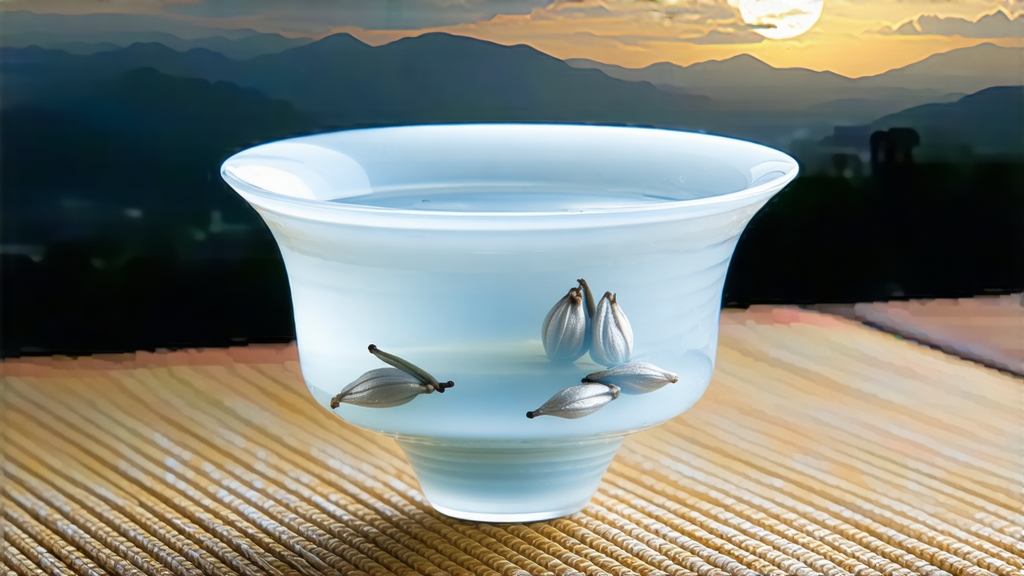
Among the six great families of Chinese tea, white tea is the most whispered about: it is harvested only when the spring nights are still cool, handled only by palms that know how to respect a leaf’s silence, and released to the world with the least human interference. Within this minimalist lineage, Silver Needle—Bai Hao Yin Zhen—stands as the luminous apex, a tea so refined that emperors once measured its worth against jade. To understand China’s tea imagination, one must follow the moonlit path that leads to the mist-wrapped gardens of northern Fujian, where every dawn between mid-March and early April turns the hills into fields of glimmering silver.
Historical tapestry
The first written record of “white tea” appears in Song-dynasty treatises (960-1279), yet those texts speak of a compressed cake whose colour, not craft, earned the name. The loose, downy buds we now recognise as Silver Needle emerged during the late Qing, when market demand for light, fragrant teas coincided with improved road access to Fuding and Zhenghe counties. Foreign merchants stationed in Fuzhou found that the pale liquor travelled better than green tea on the long sea voyage to Europe; by 1890 Silver Needle was listed on London auction boards at prices rivalling first-flush Darjeeling. In 1915, at the Panama-Pacific International Exposition, a Fuding producer won a gold medal, sealing the tea’s global reputation. During the 1970s domestic consumption dwindled—white tea was considered too “quiet” for revolutionary palates—but the 1990s wellness renaissance restored its prestige, and today Silver Needle commands the highest auction prices of any Chinese white tea.
Terroir and micro-seasons
Authentic Silver Needle comes only from the Da Bai (Big White) and Da Hao (Big Down) cultivars, whose buds can reach 3.5 cm and carry a dense cloak of protective trichomes. The maritime climate of northern Fujian—morning fog drifting in from the East China Sea, afternoon sun filtered by high cloud—creates a diurnal swing of 10 °C that slows photosynthesis, concentrating amino acids and volatile aromatics. The picking window is brutally short: the first three to five days after the spring equinox, before the buds unfurl into leaves. Experienced growers speak of “three mornings and two noons,” meaning the ideal pluck is the second morning after rain, when surface moisture has evaporated yet internal cells remain turgid.
Pluck and wither: the art of doing almost nothing
Unlike green tea, Silver Needle is never pan-fired or rolled. The moment a bud is snapped from the branch, oxidation begins; the craft lies in guiding that oxidation to a whispered 5–8 % without ever touching the leaf violently. Pickers place the buds in shallow bamboo baskets lined with gauze, then set them on racks in a sun-drenched courtyard for twenty to forty minutes of “sun-wither.” The goal is not to dry, but to soften cell walls so that internal moisture can migrate outward. When the bud feels cool and limp—what farmers call “the silk hand”—it is moved indoors to a climate-controlled loft where temperature (22–26 °C) and humidity (65–70 %) are modulated by opening or closing louvered windows. Here the buds rest for 36–48 hours, during which enzymatic oxidation produces notes of fresh hay, ripe melon, and crushed fennel. A final low-temperature bake at 40 °C for fifteen minutes halts oxidation without caramelising sugars, preserving the silvery sheen that gives the tea its name.
Grading and authenticity
Not every pale bud qualifies. The national standard GB/T 22291-2017 stipulates that top-grade Silver Needle must be composed entirely of unopened buds, at least 90 % of which are covered in white down. Lower grades, often marketed as “White Needle” or “White Tip,” may include one-leaf-and-a-bud sets harvested later in spring. A simple authenticity test is the “float and sink” method: place a gram of tea in still 80 °C water; genuine Silver Needle will hover vertically, trichomes trapping micro-bubbles that act like tiny balloons, before drifting slowly downward.
Water, fire, and patience: brewing the moonlight
Silver Needle is forgiving yet revealing; its subtle aromatics can be coaxed or crushed by